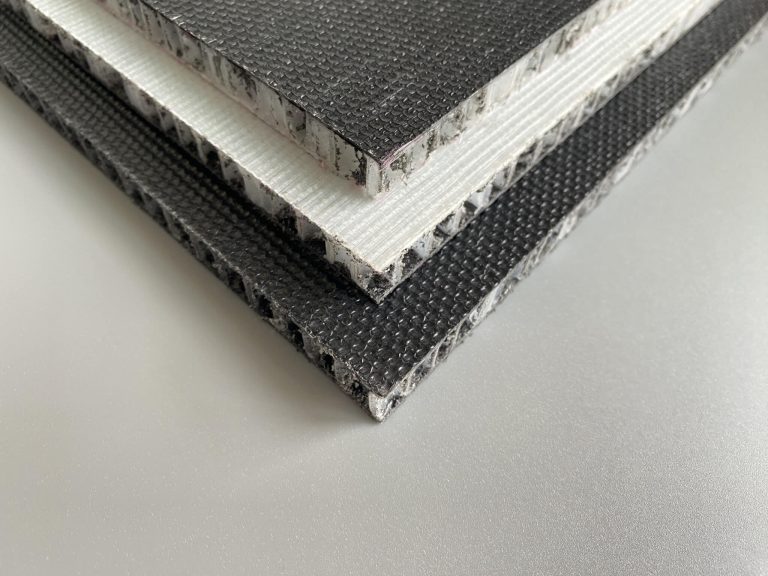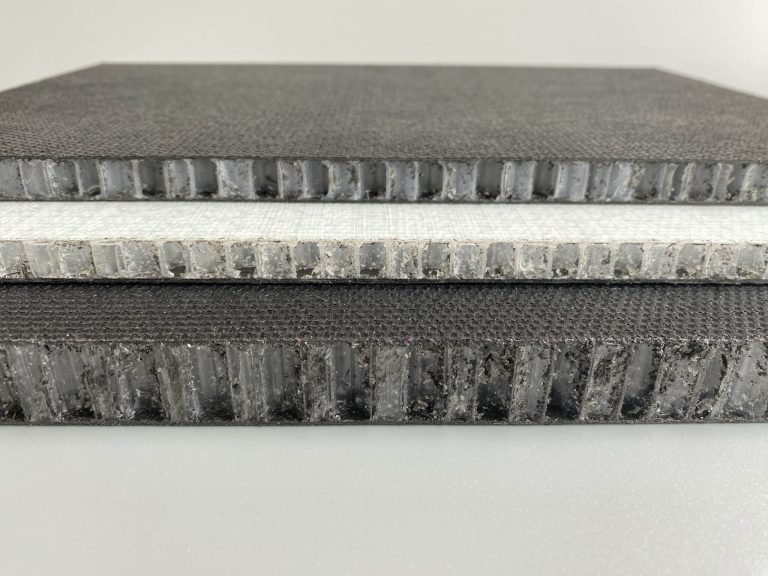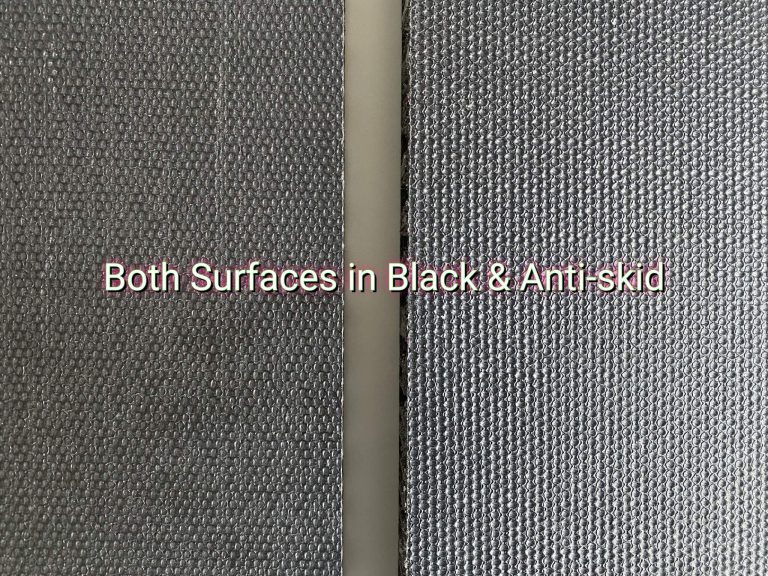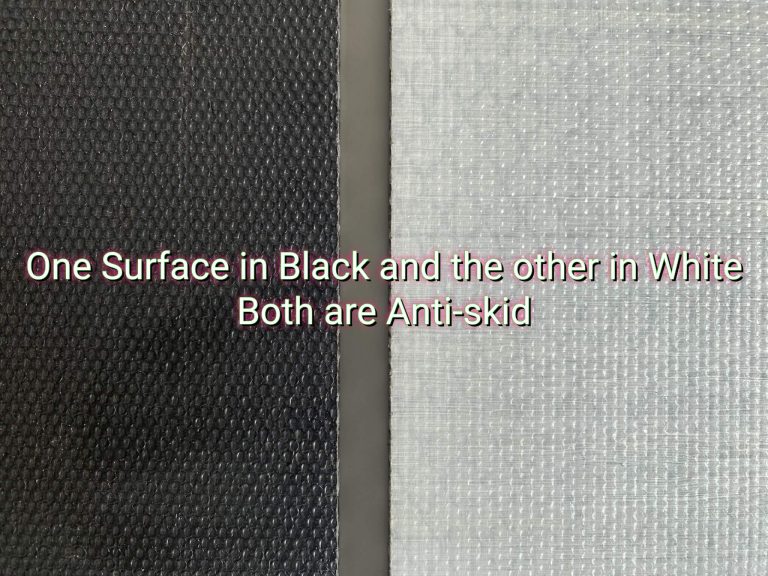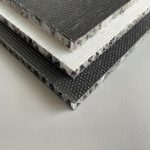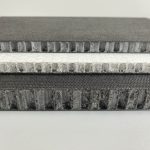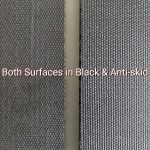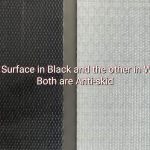Scaffold Boards
Introducing our revolutionary sandwich-style scaffolding boards, tailored for lightweight systems like aluminum and mobile scaffolding. These boards boast unparalleled bending strength, structural soundness, weather and UV resistance, and durability, providing workers with a safe platform to traverse and carry out tasks.
Available in popular thicknesses ranging from 9 mm to 20 mm, our boards feature glass fiber-reinforced PP skins and a PP honeycomb core with a density of 150 KG/m³.
Scaffold Boards Structure
Our scaffold boards feature a sandwich structure, consisting of continuous glass fiber-reinforced polypropylene tapes that are cross-layered in the XY direction and then hot-pressed and composited. Both the top and bottom surfaces of the board are made of this composite material, while the core layer is a PP honeycomb board with a density of 150g per cm³.
An ultra-lightweight yet robust board, it stands as the ideal choice in response to the lightweighting and energy-saving trends advocated by industries today.
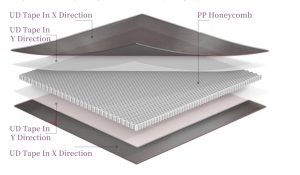
Scaffold Boards Size & Specifications
• Thickness
Our most popular thickness specifications include 9mm, 9.5mm, 10mm, 10.5mm, 11mm, 12mm, 12.5mm, 15mm, and 19mm. However, we also have the capability to produce other thicknesses, as all thicknesses can be customized according to customer requirements with a precision tolerance of +/-0.5mm.
• Length
As our boards are produced continuously in the length direction and then cut to various lengths as required, theoretically, we can produce boards of any length.
• Width
The width of the boards is subject to the width limitation of our production equipment, and generally, we can produce boards with a width up to 2600mm.
• Density
Typically, composite boards of different thicknesses utilize the same surface structure, with thickness adjustment achieved through variations in the honeycomb core. In such cases, thicker boards equate to a lower overall density. Comparing the density of these composite boards to the average density of marine plywood, which is 715kg/m³, we find that a 9mm composite board exhibits a 37% reduction in weight per square meter compared to marine plywood. As the thickness increases to 19mm, the weight reduction percentage jumps to 59%. For a detailed breakdown of weight reduction across different thicknesses, please refer to the table titled “Comparison of Weight Between Composite and Marine Plywood.” It’s worth noting that these figures are theoretical calculations and may deviate slightly from actual results.
| Thickness | Common sizes include 9mm, 9.5mm, 10mm, 10.5mm, 11mm, 12mm, 12.5mm, 15mm, and 19mm. All thicknesses can be customized. |
| Length | Theoretically, boards of any length are available. |
| Width | Up to 2600mm. |
| 9mm | 4.07 kg/m² (Composite) | 6.44 kg/m² (Marine Plywood) | 37% (Weight Saved) |
| 9.5mm | 4.15 kg/m² (Composite) | 6.79 kg/m² (Marine Plywood) | 39% (Weight Saved) |
| 10mm | 4.22 kg/m² (Composite) | 7.15 kg/m² (Marine Plywood) | 41% (Weight Saved) |
| 10.5mm | 4.30 kg/m² (Composite) | 7.51 kg/m² (Marine Plywood) | 43% (Weight Saved) |
| 11mm | 4.37 kg/m² (Composite) | 7.87 kg/m² (Marine Plywood) | 44% (Weight Saved) |
| 12mm | 4.52 kg/m² (Composite) | 8.58 kg/m² (Marine Plywood) | 47% (Weight Saved) |
| 12.5mm | 4.60 kg/m² (Composite) | 8.94 kg/m² (Marine Plywood) | 49% (Weight Saved) |
| 15mm | 4.97 kg/m² (Composite) | 10.73 kg/m² (Marine Plywood) | 54% (Weight Saved) |
| 19mm | 5.57 kg/m² (Composite) | 13.59 kg/m² (Marine Plywood) | 59% (Weight Saved) |
Scaffold Boards Colors
Composite Scaffold Boards come in two color options: either entirely black on both sides or black on top and natural white on the bottom, with the natural white surface being a more cost-effective alternative. However, if there is a chance that the bottom surface may be exposed to sunlight during use, it is recommended to choose the option with both sides being black, as the white surface has weaker UV resistance compared to the black one. Especially when using these boards as hatch panels, it is imperative to select the ones with both sides in black.

Scaffold Boards Strength
• Bending Strength
When it comes to the strength of composite scaffold boards, we primarily focus on their bending strength. For the bending strength test of our boards, we typically adopt the three-point bending test method. The standard size of the test specimen is 300mm x 100mm, and a test span of 250mm is selected. The main focus of the test results is the breaking force, with our test standard being no less than 1500N. The breaking force of our actually produced boards generally ranges from 2000N to 2500N.
• Compressive Strength
Another secondary strength indicator is compressive strength, and our boards typically achieve a compressive strength of 4-5 MPa.
The strength of this board has surpassed the requirements set by the EN12811 standard for scaffold boards, but this is not the upper limit of our product’s capability. If you have specific strength requirements for the boards, please inform us, and we can adjust the board structure to achieve higher strength levels. Naturally, this will come with a corresponding increase in cost. The grade of a product is always linked to its cost.
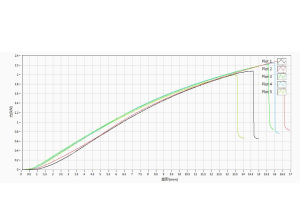
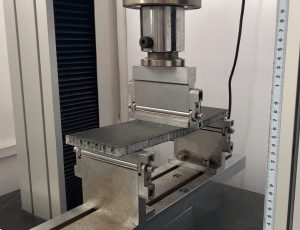
Scaffold Boards Key Features
🔧 Easy installation and removal due to their lightweight design, compared to traditional plywood.
🧼 Easy to maintain and keep clean, saving you time and effort.
🌬️ Exceptional bending and impact resistance, minimizing the risk of injuries from imbalance.
👣 Anti-skid finishes for slip-free working, even in extreme weather conditions.
💧 Resistance to water, corrosion, mildew, UV rays, and chemicals, ensuring durability.
🌱 Resistance to rot and decomposition, ensuring long-term usage.
🌍 High recyclability, making them an environmentally friendly choice.
✅ Tested and certified by a third party for 7 to 10 years of outdoor usage, giving you peace of mind.
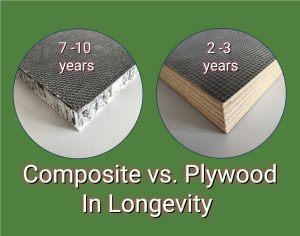
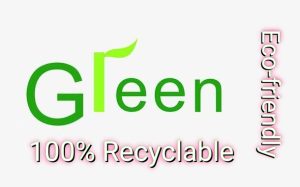
Fastening, Edging & Customization
• Scaffold Boards Fastening Methods
Regarding the fastening methods, they typically include riveting and screwing. If required, we can also pre-drill holes in the panels for riveting in advance. For a comparison of the effects of these two methods, please refer to the accompanying illustrations.
• Edging
For edging, we utilize our self-developed equipment to perform hot-melt edging, which requires no glue and is therefore highly eco-friendly. Furthermore, the strength of this edging method is exceptionally high, surpassing any product on the market that uses hot-melt adhesive for edging. However, in cases where the edges of those panels are enclosed within metal profiles and not exposed, edging would serve no purpose. Therefore, in such situations, we do not recommend edging as it would increase costs.
• Customization with Logos
Regarding customization services, we primarily cater to personalized demands such as printing customers’ logos on boards. Whether it’s printing white logos on black panels or black logos on white panels, the printing results are exceptionally exquisite. Such customization not only effectively promotes the company’s brand but also significantly enhances the aesthetic appeal of the products.
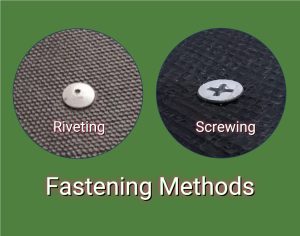

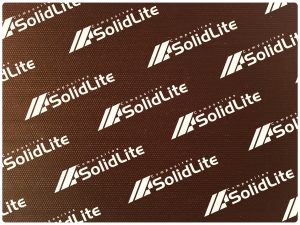
Scaffold Boards Packaging
- When packaging, we typically lay the Scaffold Boards flat on pallets, which come in either wooden or plastic options. If the customer does not specify a material, we will randomly select one.
- The height of the pallets and goods usually does not exceed 1.1 meters, but if you have special requirements (such as limited warehouse height), we can customize the height according to your needs.
- For goods transported by containers, to maximize space utilization, we sometimes stack some products vertically on the pallets. Based on our years of tracking, this practice has not caused any damage to the products.
- Once the goods are properly placed on the pallets, we will wrap them with several layers of plastic film for effective dust prevention.
- Of course, we will not forget to place protective corners on the edges of the goods, which can effectively prevent product damage and protect operators from being scratched by the sharp edges of the boards.
- After that, we will place a cover plate on top of the pallet and reinforce it with strapping.
- Finally, a shipping label will be attached to the side of the goods.
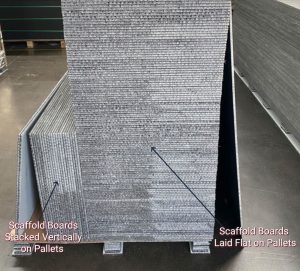
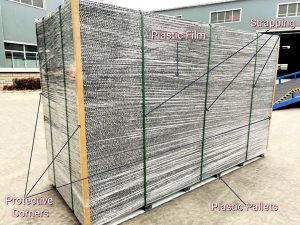
Scaffold Boards For Sale
Looking for the perfect scaffold boards? Consider our revolutionary PP honeycomb boards! These boards are engineered to exceed your expectations in every way.
Don’t miss out on this opportunity to upgrade your scaffolding system with our top-notch PP honeycomb scaffold boards. Contact us today for more information or read the case!
